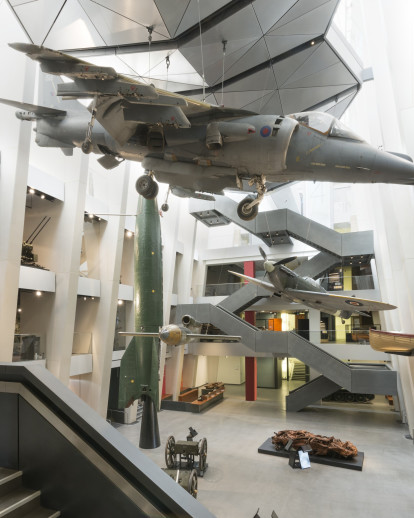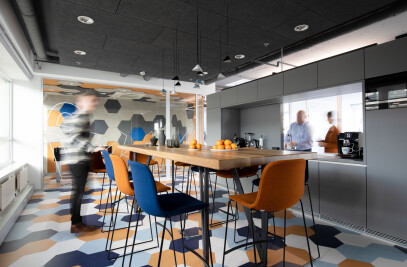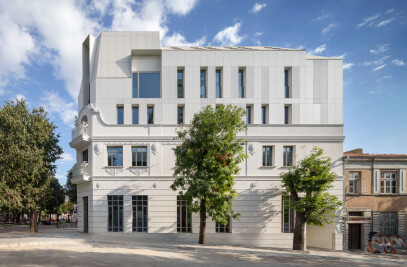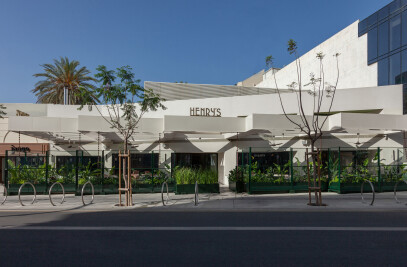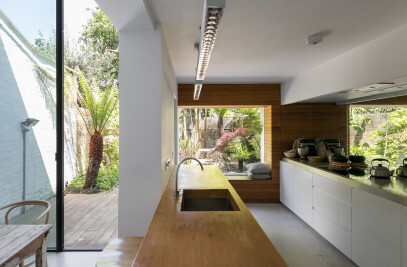The Imperial War Museum was founded during the First World War. It was opened on 9 June, 1920. It has weapons, vehicles and aircraft on exhibit, along with more than 15,000 paintings, drawings and sculptures that portray the wartime experiences of people of all social classes in all countries of the British Empire. The museum‘s 50 million euro renovation began in autumn 2012. It reopened on July 17, 2014.
Imperial War Museum in London lowers noise with HERADESIGN® acoustic panels A war museum with top-notch exciting exhibits and outstanding acoustics. 3600 square meters of HERADESIGN® fine wood wool acoustic panels keep the volume. At appropriate levels in the renovated Imperial War Museum in London. Thanks to high sound absorption levels, visitors can concentrate, enjoy the quiet and let the thousands of exhibits from the two world wars sink in undisturbed. The matte black surface of the panels is also reflection-free, so that the exhibits are also perfectly presented. Gargantuan howitzers, century-old rifles, original uniforms worn by the British military and shot-up road signs as witnesses of the two world wars: all this is on display at the Imperial War Museum in London, one of the world‘s most important war museums. In the autumn of 2012, the museum invested an appropriate amount of money - £ 40 million, just over € 50 million - in the construction of new exhibition spaces that Prince William officially opened in person on 17 July 2014.
Before the opening, the architects from the British architectural firms Wilson Mason LLP had to overcome some hurdles, especially controlling the acoustics of the growing museum. The new exhibition spaces, café and galleries upstairs all had to open into the large atrium that is flooded with natural light. The architects knew that they needed a clever acoustic solution on the ceilings to prevent noise from visitors, tours and all the interactive displays from being drawn into the atrium, where it would cause a hideous cacophony. The architects also knew that this kind of acoustic environment would quickly annoy and discourage visitors and make museum visits unnecessarily stressful.
„We wanted a monolithic ceiling with acoustic properties“ In order to make the museum an acoustically pleasing place, Clive Semark from ITC Concepts, who headed up the renovation, began by looking for suitable acoustic panels. “We wanted a monolithic ceiling with acoustic properties“, explained Semark. “HERADESIGN® was a perfect fit, the finished ceilings look excellent.“ Semark chose the HERADESIGN® fine wood wool acoustic panels. They have excellent sound absorption properties and can be installed easily on the ceilings. They come in any colour, making it a perfect fit for the design.
Wood wool acoustic panels improve audibility The single layer magnesite bonded wood wool acoustic panels with a fibre width of two millimetres not only look good, but also absorb annoying sound. Even they are only between 15 and 35 millimetres thick, they have a sound absorption coefficient of αw = 0.90, sufficient for sound absorption class A. The acoustic panels absorb noise so effectively that they ensure a pleasant acoustic environment in the exhibition rooms and conversations are possible at room volume, even when the museum is full of visitors.
“The acoustic elements reduce the level of an output signal by 60 decibels within 0.4 seconds,“ explains Andreas Bluemel, Head of Product Management at HERADESIGN®. “This makes it much easier to understand people speaking in the room.“
Acoustic optimisation on 3600 square meters ceiling surface A total of 3600 square meters of wood wool acoustic panels were installed in the new exhibition rooms, spread over four floors. The acoustic solution is used in the new gallery, where paintings and photos show the history of the First World War from the perspective of the British military and British society. The drywaller installed the panels directly onto a metal substructure and adapted them to all of the exposed building installations.
HERADESIGN® acoustic elements have the necessary flexibility. The panels are available in popular formats between 600 x 600 and 1250 x 625 millimetres and are easy to cut to the desired size and shape with jig saws, routers, or a hand saw. Alternatively, the panels can be installed on wooden structures or CD profiles for direct fitting onto the substrate. The installer then coats the screws with the included paint in the desired RAL colour, rendering them invisible. The result is a monolithic ceiling that looks like a single piece of material. “The drywall installers benefit from a system that is easy to handle,“ says product manager Bluemel. “In this respect, it is streets ahead of many competing solutions.“
Matt black draws attention to exhibits The architects opted for a simple, matte black colour. Installation cables, lights and ventilation shafts are also in matt black, so the ceiling acts as a unified whole, and helps visitors to concentrate on the exhibits. Another advantage: Matte black wood wool acoustic panels do not produce any reflections. They prevent unintended reflections on the exhibits and information displays. Visitors can enjoy the exhibits in complete relaxation without any annoying reflections. This prevents visitors‘ eyes from getting tired, even after spending a long time at the museum. “We are very proud that we were able to make a contribution to the new Imperial War Museum in London with our product,“ said Blumel.
Active contribution to sustainability forestry The wood wool acoustic panels fine set a new benchmark in terms of sustainability. The FSC label, awarded by the non-profit non-governmental organization Forest Stewardship Council® (FSC®), confirms that the wood used comes exclusively from responsibly managed forests. Unfortunately, not everyone does this. According to Greenpeace, up to 19 percent of timber imports into the European Union, come from companies that log timber illegally, destroying flora and fauna in the process. The FSC-certified wood wool acoustic panels from HERADESIGN® helped the architects make an active contribution to sustainable global forest management.
